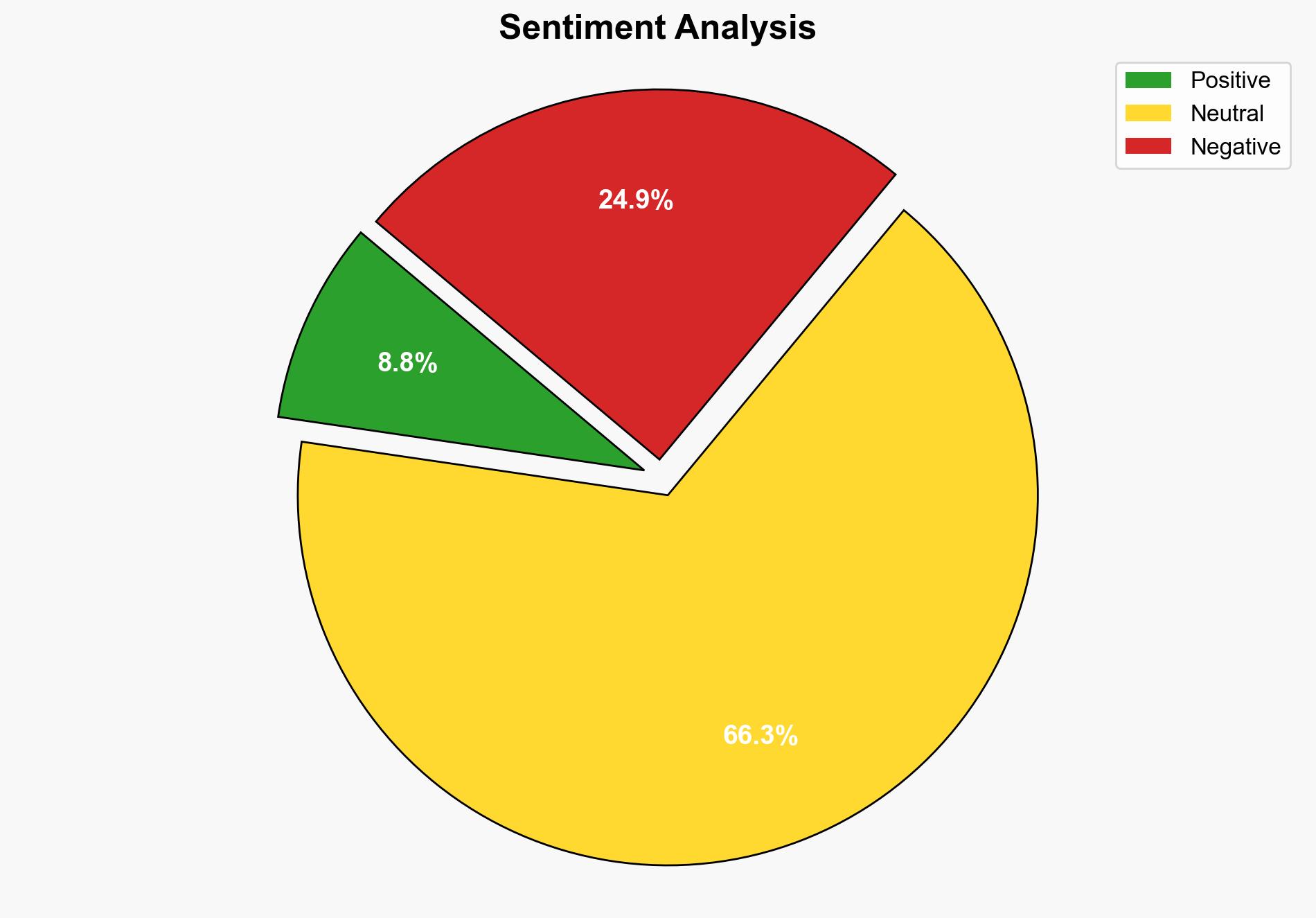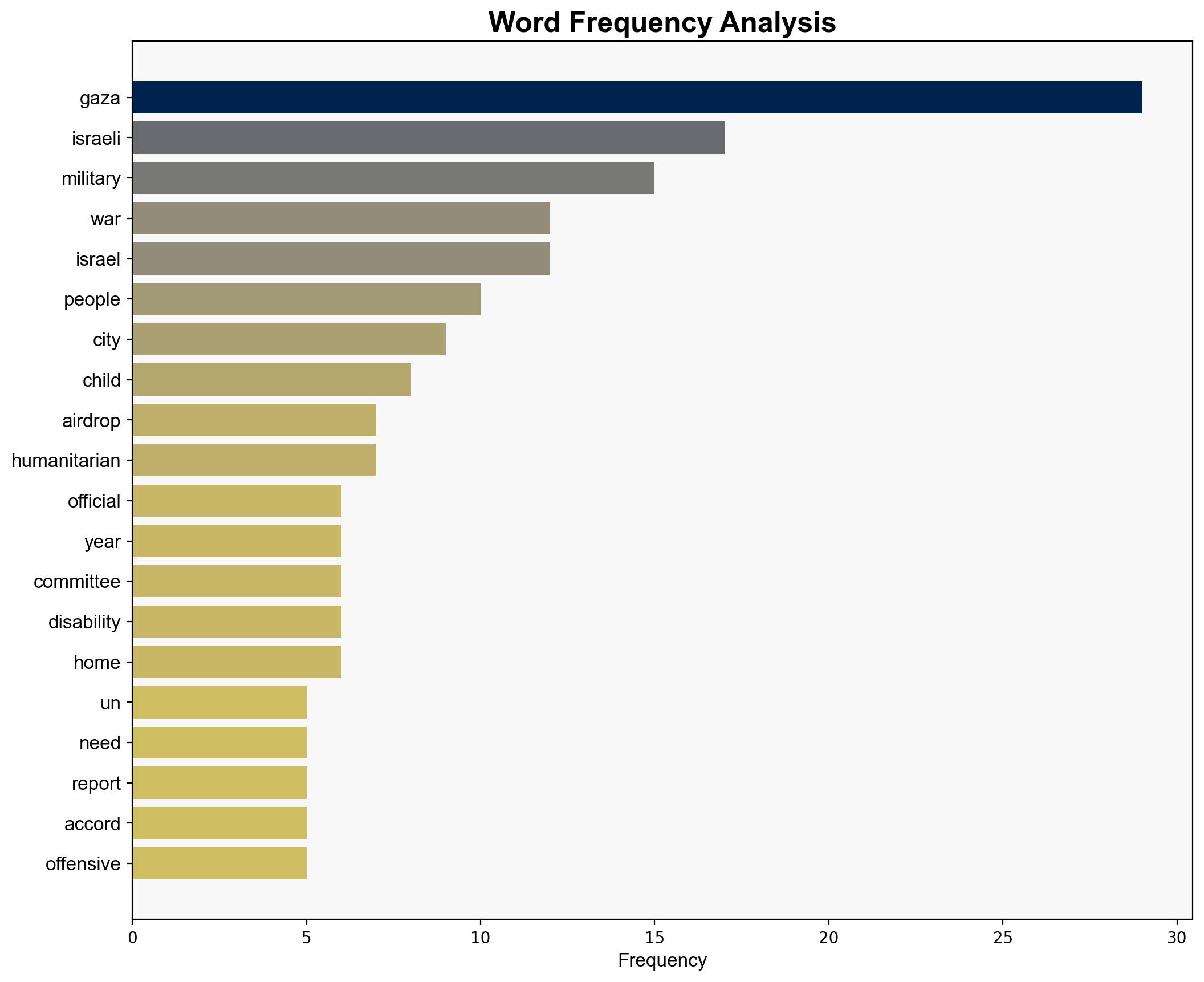UN committee 21000 children disabled in Gaza war – RTE
Published on: 2025-09-03
Intelligence Report: UN committee 21000 children disabled in Gaza war – RTE
1. BLUF (Bottom Line Up Front)
The most supported hypothesis suggests that the humanitarian crisis in Gaza, exacerbated by Israeli military operations, has significantly impacted children, leading to a high number of disabilities. This is compounded by logistical challenges in delivering aid. Confidence Level: Moderate. Recommended action includes diplomatic engagement to facilitate humanitarian access and ensure protection measures for vulnerable populations.
2. Competing Hypotheses
1. **Hypothesis A**: The high number of disabled children in Gaza is primarily due to intensified Israeli military operations and inadequate evacuation protocols for vulnerable populations.
2. **Hypothesis B**: The reported disabilities are exaggerated or misrepresented due to political motivations, with logistical challenges in aid delivery being used as leverage in international negotiations.
Using the Analysis of Competing Hypotheses (ACH) 2.0, Hypothesis A is better supported by the evidence of ongoing military operations and documented challenges in humanitarian aid delivery. Hypothesis B lacks substantial evidence but cannot be entirely dismissed due to potential political biases in reporting.
3. Key Assumptions and Red Flags
– **Assumptions**: It is assumed that the UN committee’s figures are accurate and unbiased. The effectiveness of Israeli military protocols in protecting civilians is also assumed to be lacking.
– **Red Flags**: Potential biases in reporting from both sides, lack of independent verification of disability figures, and the possibility of political influence on humanitarian narratives.
– **Blind Spots**: Limited visibility into the internal decision-making processes of both Israeli and Palestinian authorities regarding humanitarian access and military operations.
4. Implications and Strategic Risks
The humanitarian crisis in Gaza poses significant geopolitical risks, including potential escalation of conflict, increased international pressure on Israel, and further destabilization of the region. The inability to deliver aid effectively could lead to a humanitarian catastrophe, increasing regional tensions and potentially drawing in international actors.
5. Recommendations and Outlook
- Engage in diplomatic efforts to negotiate ceasefires or safe passage agreements for humanitarian aid.
- Encourage international monitoring and verification of aid delivery and civilian impact to ensure transparency.
- Scenario Projections:
- **Best Case**: Successful negotiation leads to improved humanitarian access and reduction in civilian casualties.
- **Worst Case**: Continued military operations exacerbate the humanitarian crisis, leading to international intervention.
- **Most Likely**: Ongoing diplomatic efforts result in intermittent aid delivery with limited impact on the overall crisis.
6. Key Individuals and Entities
– Hussein Al Shebli
– Jordan Hashemite Charity Organization
– Israeli military and government officials
– UN Committee on the Rights of Persons with Disabilities
7. Thematic Tags
national security threats, humanitarian crisis, regional conflict, international diplomacy





